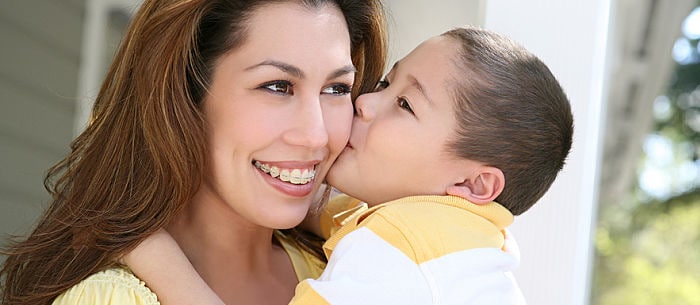Behavior modification is a parenting technique that uses reinforcement to reward good behaviors and discourage unwanted ones. The basic goal is to address a behavior without worrying about the underlying cause that motivates it. As parents debate the pluses and minuses of using conditioning as a parenting strategy, it’s important to know the facts. Dr. Rita Eichenstein, a pediatric psychologist and author of “Not What I Expected,” and Glenn Wolff, a Connecticut-based family therapist, share their thoughts on the ins and outs of behavior modification.
- Know the Components
There are four methods of conditioning: positive reinforcement, negative reinforcement, positive punishment and negative punishment. You’re probably familiar with many of these actions even if you haven’t used the terms before.
- Positive Reinforcement
Using positive reinforcement involves offering a reward for positive behaviors to encourage your child to keep doing them. “Positive reinforcement is probably the most effective method of shaping behavior,” says Dr. Eichenstein. “Children who are praised and are acknowledged for their efforts are more likely to continue to want to do those behaviors.” Take your son out for ice cream after he worked hard to finish a difficult school project. Positive reinforcement gives him what he wants — ice cream — for doing something you want him to do. Some parents offer candy as a potty-training reward. While this may be effective in reinforcing bathroom behaviors, many object to the emphasis placed on candy as a bribe when something more simple and healthy — praise, self-esteem, stickers on a chart, the promise of a prize — works just as well.
- Negative Reinforcement
This method takes away something unpleasant to reinforce good behavior. A child will clean his room to get his parents off his back about the mess. His good behavior is reinforced by the removal of his parents’ constant reminders. In negative reinforcement, you’re not actually doing anything negative — the “negative” refers to removing something from the equation.
- Positive Punishment
This form of punishment presents a negative consequence in response to a negative behavior (“positive” refers to the fact that you’re adding a consequence). A prime example is spanking. “Research indicates that spanking can be detrimental to children and can increase aggression and other behavior problems,” says Wolff. There are better types of positive punishment, however. You can let a child experience the “natural consequence” of a negative behavior — getting a bad grade when she doesn’t study, for example.
- Negative Punishment
Rather than introducing a consequence, negative punishment takes something away in response to a negative behavior. Take away a toy after your child fails to clean his room, or refuse to acknowledge a tantrum to discourage it from happening again. You can remove screen time privileges if your son teases his sister. In this case, a more beneficial strategy, however, would be to use positive reinforcement of increased screen time if their son behaves well, as rewards are generally more effective than punishment in modifying future behaviors in children.
When to Use Behavior Modification
“Behavior modification is a good way to address a variety of behavior problems and shape behavior one step at a time.” Wolff says. “It can be particularly effective when disciplining kids with ADHD, autism or oppositional defiant disorder.” Behavior modification works well as a reaction to an immediate need. A grocery store tantrum is better solved with positive punishment (a “consequence” as many parents call it) or negative punishment (taking treats out of the shopping cart) than with trying to reason with the child in the heat of the moment. Parents can treat biting, hitting or running out into the street in the same way. Behavior modification techniques also work well in helping to achieve long-term behaviors, like making the bed, studying for tests, using good manners and completing school assignments on time.
At the same time, treating only the behavior and not its underlying causes skips important teachable moments, such as connecting with children on a deeper level, teaching empathy, values and other life lessons. In most cases, these strategies work best when paired with techniques to change the mind as well as the behavior.
Cara J. Stevens is a freelance writer living in Connecticut with her husband and two children. You can follow her work on Facebook and Twitter.





